Exploring the Rich Variety of Cat Breeds
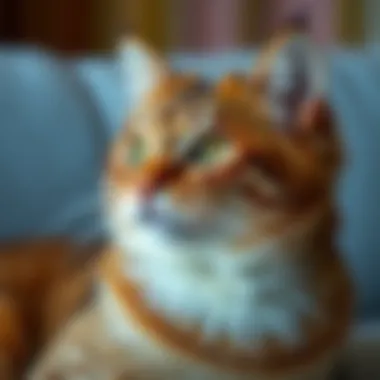
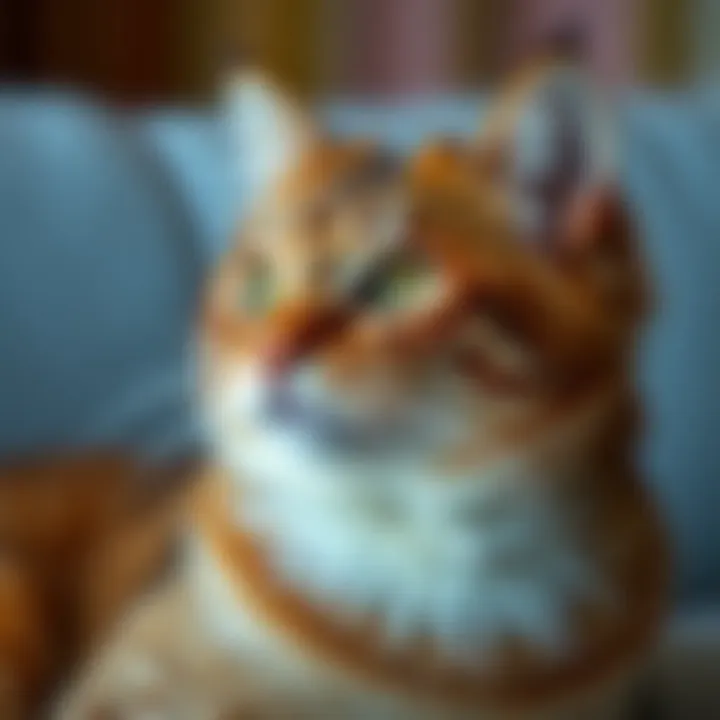
Intro
Cats, those mysterious creatures that walk among us, showcase a staggering array of breeds, each with their own array of charm and individuality. The world of feline companionship offers something for everyone. Whether you’re enthralled by the thought of a regal Maine Coon with its impressive tufted ears or you find yourself drawn to the sleek and agile Siamese, each breed carries its unique narrative, rooted in history and trait. Understanding the diversity of cat breeds is more than a simple academic exercise; it’s a vital component in choosing the right furry friend for your life.
This guide provides a thorough examination of various cat breeds, their distinct characteristics, and the practical considerations for care that potential owners should contemplate. It digs into the fundamental aspects of daily pet care while highlighting the nuances that separate one breed from another. With this knowledge, you’ll have the tools to make an informed decision on your next feline addition.
We’ll explore key features to consider such as temperament, exercise needs, and health to provide a comprehensive overview. From recognizing a breed’s history and temperament to evaluating your lifestyle and how a cat fits into it, this guide aims to deliver insightful information to both seasoned professionals and curious novices alike.
Understanding Feline Classification
Understanding how we categorize and classify cats is crucial for any cat owner or enthusiast. It gives us a deeper appreciation for the wide variety of breeds we can choose from and their unique traits. This classification isn't merely academic; it has practical implications for pet care, breeding, and even behavior management. Knowing the specific breed can help one prepare for the personality and care parameters involved.
The Importance of Breed Recognition
Recognizing and understanding cat breeds is more than just a fun fact for dinner conversations. Different breeds often exhibit particular behaviors and temperaments, which can significantly impact the relationship between a cat and its owner. For instance, Siamese cats are known for their vocal tendencies and social nature, while British Shorthairs are generally more laid back and introverted.
The importance of breed recognition extends to health issues too. Some breeds are predisposed to specific medical conditions. For example, Persians are prone to certain eye disorders due to their flat faces. An informed owner can take preemptive steps in healthcare based on these predispositions, potentially lengthening their feline friend's life.
"Understanding breed differences helps form stronger bonds between humans and their feline companions."
Moreover, knowing the breed can tailor the environment to suit the cat’s needs. Active breeds like Bengals require more space and stimulation, while Ragdolls might be more suited to calm environments. The responsibility of a pet owner is to ensure that their cat feels at home, and recognizing the specific breed traits is the first step in meeting that responsibility.
How Breeds are Defined
When it comes to feline classification, breeds are defined based on a combination of physical characteristics, lineage, and temperamental traits. These factors collectively shape what we understand as a breed, encompassing everything from fur texture to behavioral tendencies.
Physical traits can be quite noticeable, like the long, shaggy fur of a Maine Coon versus the sleek coat of an Oriental Shorthair. These traits are often documented in breed standards set forth by cat registries such as The International Cat Association or the Cat Fanciers' Association.
Lineage is equally important in defining a breed. Many breeds have a well-documented history that exhibits how certain traits have emerged through selective breeding. For instance, Abyssinians trace their lineage to ancient Egypt and are recognized for their unique ticked coat and playful demeanor.
Temperament plays a significant role as well. Certain breeds, like the calm and affectionate Ragdoll, were bred with specific purposes in mind—typically companionship. Each of these elements combined allows enthusiasts and potential pet owners to understand what to expect in terms of care and companionship.
In summary, feline classification is an intricate tapestry, woven from physical traits, lineage, and behavioral patterns. Each element informs the last, creating a richer understanding of not just individual breeds but the feline species as a whole.
Persian Cats
When one thinks of a classic cat breed, Persian cats often come to mind. Renowned for their luxurious coats and gentle personalities, they have held a special place in the hearts of cat enthusiasts for centuries. Persian cats are not just about looks; they embody a unique blend of elegance and temperament that makes them ideal for many households. Understanding this breed’s requirements helps potential cat owners make informed decisions and ensures a harmonious living environment.
Physical Characteristics
One cannot discuss Persian cats without first mentioning their distinctive appearance. Characterized by a round face and short muzzle, these cats possess an almost cartoonish charm. Their large, expressive eyes come in various colors, ranging from blue to copper, and they have plush, thick fur that may be either long or semi-long depending on the individual cat.
The body structure is robust, with sturdy legs and a bushy tail that complements their cozy look. Additionally, the breed displays a striking variety of colors and patterns, including solids, bi-color, and even tabby varieties. This wide array of physical traits is one reason why Persians capture the admiration of so many.
Personality Traits
Persians are often celebrated for their calm and gentle demeanor. Known to be typically quiet, they prefer a laid-back lifestyle. Unlike some of the more hyperactive breeds, Persian cats are content to lounge around the house all day, soaking up the sun and curling up next to their human counterparts.
They tend to be affectionate and form deep bonds with their caretakers. Many owners describe their Persians as being almost dog-like in their loyalty. However, it’s worth noting that while they enjoy companionship, they usually aren’t the type to demand constant attention. A Persian might sit beside you but may not jump into your lap unless they feel like it—an important distinction for prospective owners to consider!
Care Requirements
Taking care of a Persian cat requires a bit of commitment. Their long fur needs regular grooming—daily brushing is not just advised; it's essential. This helps to prevent matting, which can be uncomfortable for the cat and tricky for the owner. Additionally, Persians are prone to tear staining due to their unique facial structure, so regular cleanings around the eyes are part of the routine.
Diet also plays a crucial role in keeping your Persian healthy. Providing high-quality food can help manage their grooming needs and maintain a healthy weight, as Persian cats can be prone to obesity. And while they enjoy lounging, regular play sessions are crucial for their mental stimulation.
In summary, owning a Persian cat is like adding an elegant touch to one’s home, but it comes with responsibilities that should not be overlooked. Whether it’s the grooming demands or their affectionate nature, understanding these cats is key to developing a lasting bond with them.
Siamese Cats
Siamese cats hold a special place in the hearts of many feline enthusiasts. Their striking appearance and spirited nature contribute to their enduring popularity. Whether you're seeking a pet that is both engaging and affectionate or simply have an appreciation for captivating cat breeds, Siamese cats certainly merit attention.
Distinctive Features
Siamese cats are easily identifiable, thanks to their distinctive coloration and blue almond-shaped eyes. These felines typically possess a short, sleek coat with color points on the ears, face, paws, and tail. The common colors include seal point, chocolate point, and blue point, among others. Their slim and elegant bodies are complemented by long legs and a whippy, graceful tail.
The contrast between their light body and darker points gives them an almost painterly quality, making them incredibly photogenic.
Behavioral Patterns
When it comes to personality, Siamese cats are known for their sociable and vocal demeanor. They often enjoy having their human companions nearby and are known to engage in conversation with a variety of sounds, from soft trills to loud meows. Their playful nature means they require ample interactive playtime, so a few feather toys or laser pointers can go a long way. It’s not uncommon for them to fetch like a dog or follow their owners around the house. Additionally, they often form strong attachments to their families and can become very loyal companions.
"Siamese cats are less inclined to be solitary; they thrive on interaction, both with humans and other pets."
Thus, it's vital to create an environment that fosters social engagement for these intelligent cat breeds.
Health Concerns
While Siamese cats generally maintain good health, they are not without potential issues. Some common concerns include respiratory problems and dental diseases, often linked to their distinctive skull structure.
Additionally, they may be prone to diabetes, so monitoring their diet and weight is essential. Regular veterinary check-ups can help ensure these conditions are addressed early. Overall, with proper care and attention, Siamese cats can live healthy and happy lives.
To ensure the welfare of a Siamese cat, it is wise to gather as much information as possible about their specific health traits and needs from reliable sources, such as The Cat Fanciers' Association and American Veterinary Medical Association.
Engaging with other Siamese cat owners on platforms like reddit.com can also provide valuable insights.
Understanding the unique characteristics and requirements of Siamese cats can empower potential pet owners to make informed decisions about inviting one of these vibrant felines into their lives.
Maine Coon Cats
Maine Coon cats hold a special place in the tapestry of feline breeds. Known for their impressive size and charming demeanor, they become more than just pets—they become part of the family. Their majestic appearance and engaging personalities make them a favorite among cat enthusiasts. Owning a Maine Coon isn't just about having a pet; it's about embracing a creature with a striking presence and a heart of gold. Understanding the intricacies of this breed can equip potential owners with the knowledge they need to provide the best environment for their new friends.
Size and Appearance
Maine Coons are often dubbed the "gentle giants" of the cat world. Adult Maine Coons typically weigh between 10 to 25 pounds, with males generally being larger than females. Their robust bodies are complemented by long, bushy tails that can be as expressive as a flag waving in the wind. One striking characteristic is their tufted ears, resembling those of a lynx, which not only adds to their regal appearance but also enhances their keen sense of hearing.
The coat of a Maine Coon is another highlight. It's thick, water-repellent, and often features a variety of colors and patterns. This breed sports a distinctive mane around its neck, giving it a lion-like appearance. Thus, Maine Coons not only embody size but also grace and elegance in their physical form.
Temperament Insights
Maine Coons are beloved not merely for their stunning looks but also for their warm and playful personalities. These cats are known for being affectionate and sociable, often developing strong bonds with their owners. They have a playful streak that can last well into adulthood, making them fun companions for families and individuals alike. Their intelligence is another feather in their cap; they are quick learners and can even be trained to play fetch, much like a dog. Despite their size, Maine Coons often display a calm and gentle demeanor, making them suitable for homes with children and other pets.
"Maine Coons are known to get along well with just about everyone, proving that size doesn’t dictate temperament."
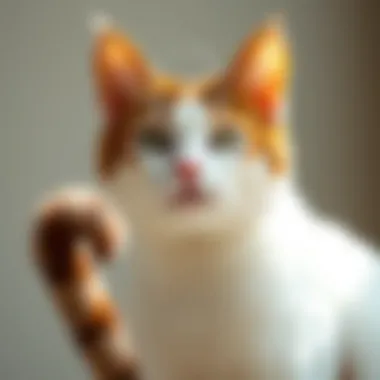
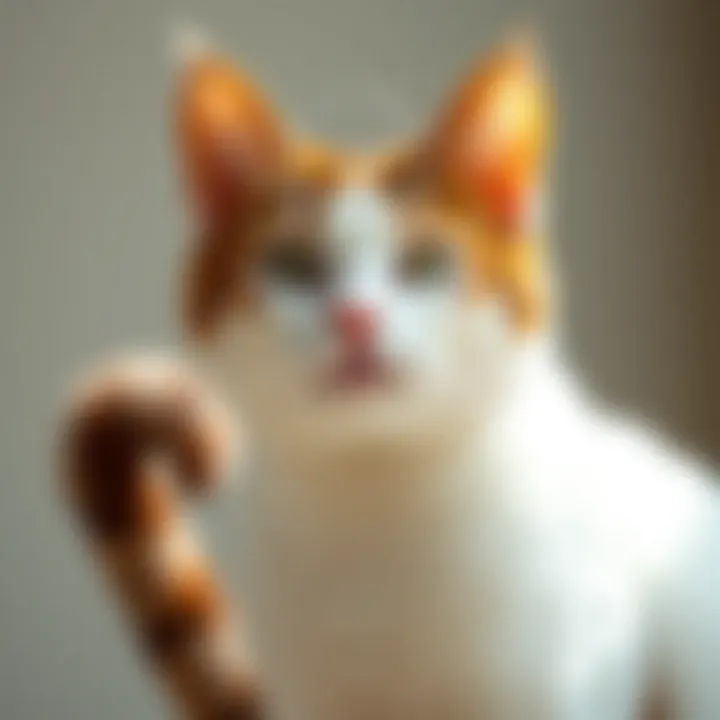
Maintenance Needs
While Maine Coons may appear low-maintenance at first glance, there are some considerations to keep in mind. Their thick fur necessitates regular grooming to prevent matting, especially around their underbellies and behind their ears. Once or twice a week of brushing usually suffices, but during seasonal shedding, more frequent grooming might be necessary. Additionally, like all cats, they need a healthy diet to support their sizeable physiques. Good quality cat food that supports their energy levels and overall health is paramount. Regular vet check-ups are also important for monitoring their health, particularly for conditions that are predisposed in the breed, such as hypertrophic cardiomyopathy. Caring for a Maine Coon involves commitment but rewards owners with a devoted companion that enriches their lives.
In summary, Maine Coons encapsulate a unique blend of size, beauty, intelligence, and friendliness. Understanding these characteristics can pave the way for a fulfilling relationship between you and your Maine Coon cat.
Bengal Cats
Bengal cats have gained a special place in the hearts of cat lovers around the world. Their captivating spotted or marbled coat patterns mimic those of wild leopards, providing an aesthetic appeal that is hard to resist. This section aims to delve into the particular aspects of Bengal cats that make them so unique and desirable as pets. From their visually striking appearance to their energetic demeanor, understanding these characteristics can help potential pet owners make an informed decision about welcoming a Bengal into their home.
Unique Markings and Patterns
One of the most distinct features of Bengal cats is their coat. The patterns seen on these cats can range from a classic wild look with rosettes similar to a leopard's to a stunning marbled pattern that looks as though it was painted on by an artist. Each Bengal cat’s markings are unique, making them as individual as a fingerprint. Furthermore, their short fur is soft and luxurious to the touch, which adds to their charm.
Homeowners often find that the vibrant color variations, including brown, snow, and even charcoal, create a lively atmosphere in their living space. These breeds capture attention with their striking looks, and many owners take joy in showcasing these features through photography and social media.
Activity Level
Bengal cats are known for their fantastically high energy levels. Unlike some breeds that may enjoy lounging around all day, Bengals are often up for a spirited romp or a game of fetch. They are agile and playful, requiring ample space to move around freely. Owners should consider creating an engaging environment with climbing trees, scratching posts, and various toys to satisfy their energy needs.
It's crucial to provide mental stimulation; otherwise, they may resort to mischievous activities, venting their pent-up energy in undesirable ways. Engaging them with puzzle toys, interactive games, or even training them to do tricks can keep them entertained. Their playful nature makes them wonderful companions, particularly for those who are active and can match their spirited energy.
Dietary Considerations
Feeding a Bengal cat is not merely a matter of opening a can of cat food and calling it a day. Due to their energetic lifestyle, they require a high-protein diet to maintain their health and vigor. Opting for a diet rich in animal-based proteins is essential. Many owners choose high-quality, grain-free options that mimic their natural diet in the wild.
It's also wise to monitor their weight, as a diet too rich in calories can lead to obesity, which poses its own health risks. Keeping fresh water available is equally important, as hydration supports overall health. Owners should be cautious and consult with their veterinarian to tailor a diet that best suits their Bengal’s unique needs.
"A well-fed Bengal is a happy Bengal. Their diet plays a significant role in keeping their energy levels high and health optimal."
British Shorthair Cats
British Shorthair cats are a remarkable breed that holds a special place in the hearts of feline enthusiasts worldwide. Known for their distinctive appearance and charming personalities, they have much to offer in terms of companionship and character. This breed boasts a rich history, tracing back to ancient Rome, and they were admired not just for their looks, but also for their hunting abilities.
These cats' importance in this article lies in their unique physical traits, social behaviors, and manageable grooming requirements, making them an appealing choice for various households. Prospective cat owners can particularly benefit from understanding these factors when considering the addition of a British Shorthair to their family.
Body Structure
A quintessential feature of the British Shorthair is their robust body structure. Built like a muscular brick, they exude strength and presence. The broad chest, stocky legs, and large round head create an imposing yet friendly appearance. Their dense, plush fur gives them an almost teddy bear-like quality, frequently drawing the admiration of those who encounter them.
British Shorthairs mature slowly, reaching their full size at around three to five years. This gradual growth can be quite endearing. A common color among them is blue-gray, yet they exhibit a variety of colors and patterns—making them a visually diverse breed. The round face, with full cheeks and big copper or gold eyes, adds an element of sweetness to their demeanor.
Social Behavior
When it comes to temperament, British Shorthairs are often noted for their calm and adaptable nature. They aren't the type to demand constant attention like some more energetic breeds, but they do enjoy companionship. These cats tend to be quite affectionate, often choosing to spend time near their humans without being overbearing.
They possess an easy-going attitude, which makes them well-suited for families, singles, and even elderly owners. Their sociable yet independent demeanor can cater to various living situations, bringing peace to your home without creating chaos.
In addition, British Shorthairs can get along with other pets if properly introduced, which can make them versatile companions in a multi-pet household. They communicate through soft purrs or gentle meows, adding to their gentle charm.
Grooming Requirements
Caring for a British Shorthair doesn’t require the specialized attention that some other breeds might. Their thick coat does need regular brushing, ideally at least once a week, to prevent mats and keep shedding manageable. This brushing session also minimizes loose hair around your home, making it a practical activity to include in your routine.
During shedding seasons, which typically occur in spring and fall, you might find more frequent grooming to be beneficial. A gentle brush can help with coat maintenance and ensure your cat remains comfortable. Furthermore, regular nail clipping and dental hygiene are essential components of their grooming regimen.
In summary, the British Shorthair is a remarkable breed with a distinctive physique, a friendly temperament, and straightforward grooming needs. Those interested in adopting one should consider these traits, as they highlight the breed's suitability for a range of environments.
"The British Shorthair adds a touch of elegance and charm, making them a captivating choice for any cat lover."
For more on British Shorthairs and their care, you may find Wikipedia and The Cat Fanciers' Association helpful.
Ragdoll Cats
Ragdolls are often described as the gentle giants of the feline world. Their large size, striking blue eyes, and affectionate demeanor make them a beloved choice for many cat enthusiasts. In this section, we explore the allure of Ragdoll cats, focusing on their soft fur and unique color patterns, their naturally affectionate nature, and their specific exercise requirements. Furthermore, understanding these aspects can help potential owners appreciate whether this breed aligns with their lifestyles and expectations.
Soft Fur and Color Patterns
One of the standout features of Ragdoll cats is their luxurious coat. The fur is semilong and exceptionally soft, almost resembling cashmere. This softness is not just for show; it contributes to their overall charm. Ragdolls come in various color patterns including mitted, bi-color, and colorpoint.
- Mitted Ragdolls have white paws and a white chin, adding a unique touch to their appearance.
- Bi-color Ragdolls typically display a striking contrast between their darker color and white fur, often resembling a painted canvas.
- Colorpoint Ragdolls feature darker colors on their ears, face, paws, and tail, making them quite visually captivating.
Their gentle and calm disposition pairs beautifully with their stunning looks, creating a visually appealing package that many find hard to resist. When grooming is undertaken, regular brushing will ensure that their fur stays free from matting and remains in top condition.
Affectionate Nature
Ragdolls are often described as "puppy-like" in their affectionate behavior. Unlike many cats that tend to exhibit independence, Ragdolls crave human companionship and often follow their owners from room to room. This innate need for closeness means that they can be quite social, thriving in family settings where they can interact regularly.
Their tendency to go limp when picked up is one of the breed's most distinctive traits, thus the name "Ragdoll." This behavior is reflective of their calm temperament, making them comfortable with handling. They tend to get along famously with children and other pets, thanks to their amiable nature.
"Ragdolls are perfect for families wanting a cat that is loving, gentle, and easy-going."
Exercise Requirements
Despite their laid-back demeanor, Ragdolls do require regular exercise to maintain their health. They are not particularly hyperactive, but moderate playtime is essential. Engaging them with toys like feather wands, laser pointers, and interactive games is a great way to keep them entertained while encouraging them to stay active.
- Playful activities help prevent obesity, a common concern in plus-sized breeds like the Ragdoll.
- Short bursts of play twice a day can be beneficial, keeping their physical and mental health in check.
Ragdolls may not run marathons, but they will relish the opportunity to indulge in playtime with their human companions, deepening the bond of affection that this breed is celebrated for.
By understanding Ragdolls deeper, potential owners can better prepare for the joyful companionship these cats offer, making informed decisions when welcoming a Ragdoll into their homes.
Sphynx Cats
Sphynx cats are quite the intriguing breed in the feline family. Known for their unique lack of fur, these cats draw attention not just for their appearance, but also for their affectionate personalities and specific care needs. Understanding Sphynx cats is important for anyone who might consider adding one to their family, as they bring both joy and certain responsibilities.
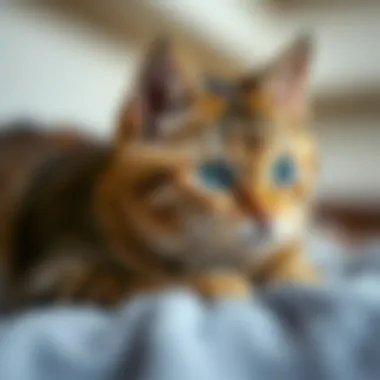
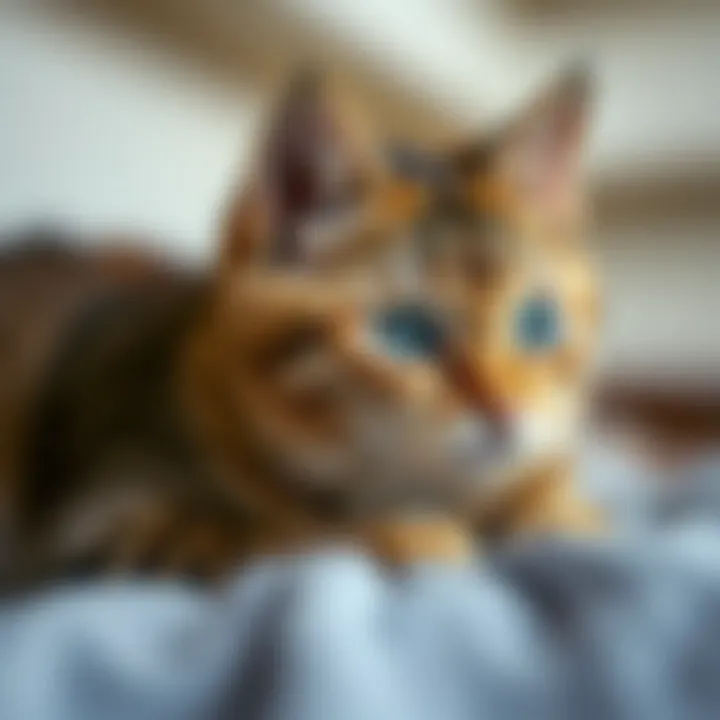
Hairlessness and Skin Care
The most noticeable characteristic of a Sphynx cat is, of course, its hairlessness. This trait, resulting from a natural genetic mutation, gives these kitties a striking appearance that leaves a lasting impression. While they might not require grooming in the traditional sense, skin care becomes essential.
Sphynx cats do not have fur to absorb oil and moisture, so they can be prone to skin issues if not cared for properly. Regular bathing, typically every week or every other week, is recommended to remove excess oils that build up on their skin. Owners should use a gentle, feline-safe shampoo to prevent irritation. It's also beneficial to regularly check their ears and nails, as these can quickly accumulate dirt and require attention.
"Sphynx cats are not just a sight to behold; they require extra steps in skin care that can deepen the bond between pet and owner."
Understanding the importance of skin care helps owners keep their Sphynx healthy and comfortable, allowing them to truly enjoy the affectionate nature of this unique breed.
Temperament and Energy Levels
When it comes to personality, Sphynx cats are often described as social butterflies. Their playful and curious nature makes them a delight to be around. They thrive on interaction, whether it's with human companions or even other pets, which can lead to a lively household atmosphere.
These cats tend to have energetic bursts, making playtime essential. Engaging them with toys, puzzles, and interactive play can keep boredom at bay. Their intelligence means they often enjoy challenges, so incorporating stimulating activities is beneficial. Regular play sessions also help burn off some of their energy, making them a great companion for active families.
Health Considerations
Like any breed, Sphynx cats come with their own set of health considerations. While they may not have the problems associated with fur-covered cats, they can be predisposed to certain genetic conditions. Cardiomyopathy, a heart condition, is among the most noteworthy. Regular check-ups with a vet familiar with the breed can help catch any potential issues early on.
Temperature regulation is another consideration since their lack of fur means they can become cold more quickly than other cats. Providing a warm environment and cozy spots for them to curl up is vital. In many cases, their owners find that dressing their Sphynx in light sweaters or specially designed cat clothes helps them stay comfortable.
In summary, Sphynx cats offer a unique blend of striking looks, playful energy, and affectionate nature. However, they do come with specific care requirements and potential health issues that prospective owners should be aware of. Educating oneself about these aspects plays a crucial role in ensuring a happy and healthy life for this charming breed.
Scottish Fold Cats
The Scottish Fold is not just another breed of cat; it embodies a unique blend of charm and charisma that strikes a chord with many enthusiasts. Recognizing their distinctive features and temperament can enlighten potential cat owners and help them in making informed decisions. This section on Scottish Fold cats explores elements that set them apart from the crowd and highlights essential considerations for prospective pet owners.
Notable Ear Structure
Scottish Folds are most famous for their unusual ears, which fold forward and downward. This trait is the result of a genetic mutation affecting the cartilage in their ear structure. As a consequence, their faces take on a somewhat rounded appearance, giving them an endearing aspect that is hard to resist. Owners often find this characteristic charming, adding to the breed’s appeal.
- The folding can vary among individuals, with some having a tighter fold than others.
- This genetic trait can also affect the overall head shape, contributing to a fuller face.
The interesting look often draws people in, sometimes leading them to choose this breed merely based on aesthetic appeal. However, it’s wise to consider that these unique ears may also require specific care to ensure no complications arise regarding ear wax or infection.
Calm Demeanor
Scottish Folds are known for their laid-back and calm nature. They tend to be more relaxed than some other breeds, making them wonderful companions for families and singles alike. This peaceful temperament allows them to adapt well to various living situations, whether apartments or larger homes. Their tranquil demeanor can lead to a soothing presence, often serving as a stress reliever for their human companions.
- They generally mingle well with children and other pets.
- Their sociable nature encourages a gentle interaction, helping to establish a sense of comfort in the home.
However, it’s key for owners to engage their Scottish Fold regularly through playtime or interaction to keep them mentally stimulated. They can sometimes become lazy, given their calm nature.
Dietary Needs
Like any breed, Scottish Folds have specific dietary needs that should not be overlooked. As a breed prone to obesity, managing their diet is crucial. This breed tends to enjoy eating, which means portion control and the right type of food are imperative. A balanced diet can help ensure they maintain a healthy weight and overall good health.
- High-quality cat food is recommended, ensuring it contains proper nutrients for their age and activity level.
- Regularly scheduled feeding times help in regulating their appetite.
- Be cautious of treats; moderation is the key.
In summary, understanding the needs associated with feeding can greatly contribute to the longevity and quality of life for a Scottish Fold cat. Paying attention to this aspect is vital for any responsible owner.
Owning a Scottish Fold is not merely about their delightful appearance but provides an opportunity to care for a loving and calm companion.
Oriental Shorthair Cats
Oriental Shorthair Cats represent an intriguing segment of feline diversity, characterized not just by their striking appearances but also by their vibrant personalities. As a breed, they offer an array of colors and patterns which no two are exactly alike, making them particularly appealing to both cat aficionados and casual pet owners alike. Given their distinctive features and lively nature, understanding Oriental Shorthairs provides valuable insight for anyone considering adding one to their family.
Color Palette Variety
One of the most striking aspects of Oriental Shorthairs is their incredible variety of colors and patterns. Unlike some breeds that adhere to strict color standards, these cats boast a spectrum that ranges from solid hues to intricate patterns that can leave one quite dazzled.
- Solid Colors: White, black, blue, cream—the options are vast.
- Tabby Patterns: From classic to mackerel, each tabby holds its own charm.
- Points: Vivid point colors against paler bodies resemble their Siamese cousins, but with many more options!
This rich variety allows a potential owner to find a cat that truly resonates with their personal style or even home decor. In choosing an Oriental Shorthair, you're not just selecting a pet but also a unique piece of living art that can brighten any space.
Socialization Requirements
Oriental Shorthairs are known for their sociable nature. They thrive on interaction—whether it be with humans or other pets. Unlike some cats that prefer solitude, these felines flourish when they are part of the family dynamics.
- Engagement: Regular playtime and social interaction can keep them engaged and mentally stimulated.
- Friendliness Towards Other Pets: Their adaptable nature means they typically get along well with dogs or other cats, making them suitable for multi-pet households.
- Attention Seeking: They often exhibit behavior that asks for attention, making it critical for owners to dedicate time to bond with them.
As a result, they require a home where they can interact freely with their owners and are often suited to active families. Given their energetic disposition, neglect can lead to boredom or behavioral problems, so planning social time is essential.
Exercise Requests
Like people, different cat breeds have their own exercise needs, and Oriental Shorthairs are no exception. These dynamic cats need regular physical activity to maintain their health and happiness.
- Playtime: Engaging in play sessions—using feather toys or laser pointers—can satisfy their playful instincts.
- Physical Space: They appreciate having access to vertical spaces, like cat trees, that allow them to climb and explore.
- Daily Routine: Ideally, daily exercise for around 20-30 minutes can keep them happy and reduce destructive tendencies.
Incorporating routines to fulfill their exercise requests will not only keep your Oriental Shorthair physically fit but also strengthen the bond between you, ensuring your home is a lively and nurturing environment.
"An Oriental Shorthair isn’t just a companion; they’re a vibrant part of your home, bringing energy and color wherever they go."
For more information about caring for cats, you might find resources at Wikipedia or The Humane Society helpful.
Exotic Shorthair Cats
Exotic Shorthair Cats are gaining popularity in many households. Their rounded faces and plush coats are not just appealing to the eyes but also signify a unique personality and behavior set. With their roots in the same gene pool as Persian cats, Exotics bring together the best of both worlds—the striking looks of a long-haired cat combined with the simplicity of short fur. This combination makes them a practical yet beautiful choice for both seasoned cat owners and newcomers alike. Understanding the specific elements of their physical appearance, temperament, and care can greatly enhance the experience of owning one of these charming felines.
Physical Appearance
When it comes to physical characteristics, Exotic Shorthairs exude an air of plush elegance. They are known for their round faces, which are often highlighted by chubby cheeks. Their short, stocky bodies are covered in a soft, dense coat that comes in a variety of colors and patterns—from deep blue to bright orange.
- Their large, expressive eyes are usually copper or blue, adding a touch of charm to their already captivating appearance.
- The body structure is muscular yet compact, with short legs and a broad chest that make them appear sturdy and robust.
- The paws are rounded, often giving them a teddy bear-like look, further endearing them to potential owners.
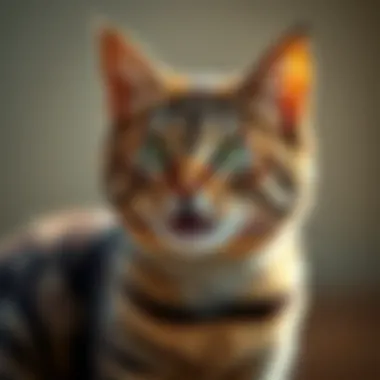
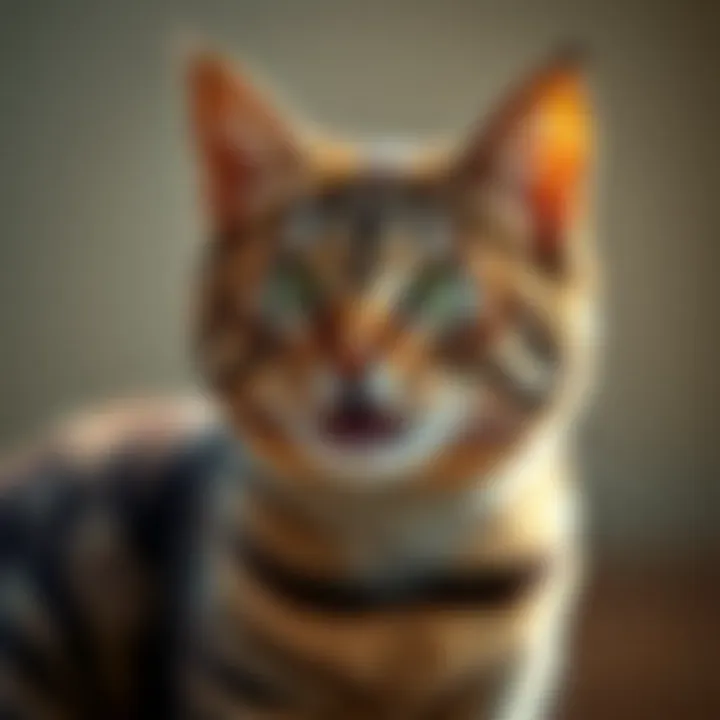
These cats are not just a feast for the eyes; their appearance can create a welcoming atmosphere in any home. A well-groomed Exotic Shorthair can easily become the centerpiece of any living space.
Temperate Personality
Exotic Shorthairs are often likened to affectionate teddy bears due to their sweet and calm disposition. Their personalities tend to be balanced—they love to play but also enjoy lounging around, making them excellent companions for various lifestyles.
- They are typically friendly and sociable, getting along well with both people and other pets. This makes urban living or multi-pet households less of a hassle.
- Their calm nature allows them to adapt well to diverse environments, rarely causing trouble or distress, which is a huge plus for busy families.
- Although they thrive on companionship, they aren’t overly clingy, striking a commendable balance between independence and affection.
Their temperament makes them suitable for first-time cat owners who may still be learning the ropes of feline companionship.
Care Guidelines
Caring for an Exotic Shorthair requires attention to their needs, yet it’s not overly complex, which is ideal for both busy and leisurely lifestyles. Here are some pointers to keep in mind:
- Grooming: Although their coats are short, regular grooming to remove dead hair and reduce shedding is necessary. A soft brush a few times a week will keep their fur sleek and their skin healthy.
- Diet: Providing a balanced diet catered to their specific age and health needs is crucial. Be mindful not to overfeed them, as they have a tendency to gain weight. Look for high-quality cat food that prioritizes protein.
- Medical Care: Routine vet check-ups are important, and vaccinations should be up-to-date to prevent health issues.
- Physical Activity: Engage them in playtime using toys or climbing structures; this helps keep them fit and mentally stimulated. They appreciate interactive play rather than solitary activities.
Overall, Exotics make delightful pets for those looking for lovable, low-maintenance companions. Their unique blend of beauty, temperament, and care needs offers a wonderful experience for any cat lover.
By understanding these aspects of Exotic Shorthair Cats, prospective owners can confidently decide if this breed aligns with their home and lifestyle. Ensuring their needs are met not only benefits the cat but enhances the owner's experience as well.
Norwegian Forest Cats
Norwegian Forest Cats have a charming place in the world of felines. Known for their rugged appearance and friendly disposition, these cats represent the beauty of nature in a domestic setting. This breed, often referred to as "Wegies," is an ancient breed that is well-adapted to the harsh Scandinavian climate, which ensures their viability as pets in various home environments. Understanding the significance of this breed gives potential owners insight into what to expect when inviting such a majestic creature into their lives.
Natural Adaptations
Norwegian Forest Cats possess unique adaptations that set them apart from other breeds. Their double-layered coat not only contributes to their aesthetic appeal but serves a functional purpose as well. This thick, water-repellent fur protects them from cold temperatures and harsh weather conditions. A notable characteristic is the tufted ears and bushy tail, which help with insulation and navigation through snowy terrains. Moreover, their strong, muscular bodies are built for climbing and navigating the trees, making them excellent hunters and explorers.
- Thick, Water-Resistant Coat: Protects against harsh climates.
- Tufted Ears: Helps with heat retention and enhances their hearing.
- Muscular Build: Aids in climbing and hunting.
In summary, their natural adaptations are not just about survival; they also lend themselves to the cat's stunning appearance and engaging behavior.
Friendly Yet Independent Nature
One defining trait of the Norwegian Forest Cat is their unique blend of friendliness and independence. They are often viewed as affectionate pets, eagerly seeking companionship with their human families. However, they also possess a streak of independence that allows them to enjoy their own space. This balance makes them suitable for various living situations, from bustling households to quieter homes.
Their friendly demeanor manifests as a strong bond with caretakers, often following family members from room to room. Nonetheless, they are not overly clingy and can happily entertain themselves when needed. This means that the breed is a solid option for individuals who may not always be home. Here are some key behavioral traits:
- Affectionate: Enjoys being part of the family.
- Social: Gets along well with children and other pets.
- Self-Sufficient: Can entertain themselves when alone.
Maintenance and Grooming
Caring for a Norwegian Forest Cat involves specific grooming needs due to their thick coat. While they are relatively low-maintenance compared to other long-haired breeds, some regular upkeep is essential. Their undercoat may mat if not brushed regularly, especially during shedding seasons, which usually occur in spring and fall.
- Brushing: A weekly brushing routine is ideal; however, during shedding peaks, transitioning to 2-3 times a week can help manage loose hair.
- Bathing: Occasional baths are recommended since they have fewer skin issues compared to other breeds; this can keep their coat in tip-top shape.
- Nail Clipping and Ear Cleaning: Regular nail trimming and ear cleaning should not be overlooked as part of their grooming routine.
"Caring for a Norwegian Forest Cat is more about forming a bond than just managing fur. It's about embracing the personality and the quirks that make each one unique."
Abyssinian Cats
Abyssinian cats hold a remarkable place in the tapestry of feline diversity. Known for their striking appearance and spirited nature, these cats make for captivating companions. Their unique characteristics not only draw the attention of potential pet owners but also reflect a rich history that intertwines with ancient civilizations. When discussing cat breeds, the Abyssinian stands out, not just for its looks, but for its vibrant personality that many admirers find irresistible. They are a breed that brings both color and energy to any household, making them a relevant topic in understanding feline companionship.
Unique Coat Texture
One of the most distinguishing traits of the Abyssinian is its coat. The texture is short, dense, and resilient, featuring a unique ticking pattern. Each hair shaft has multiple bands of color which gives the coat a dazzling and shimmering effect when the light hits it. This ticking not only enhances the aesthetics but also sets the breed apart from many others. For cat enthusiasts, the coat texture is essential as it reflects the health and grooming needs of the cat.
Due to its short hair, maintaining their coat typically requires less effort compared to long-haired breeds. Regular brushing helps to remove dirt and loose hair, ensuring that their striking beauty is preserved. Moreover, these cats are generally low shedders, which could be a bonus for those who may have allergies.
"Abyssinian cats are not just cats; they are a living testament to nature's artistry, embodying both form and function."
Curious and Playful
The Abyssinian cat is often classified as an inquisitive breed. Their playful demeanor and boundless energy set the stage for engaging interactions. They love to explore their surroundings, showcasing intelligence and curiosity that can keep any household lively. Whether it’s chasing after a laser pointer or inventing new games with household items, their playful spirit is infectious. It's not uncommon to find an Abyssinian perched at a high vantage point, observing the world below, as if they’re keeping watch over their domain.
Their social nature makes them great companions, often forming close bonds with their human families. They thrive in environments where they can socialize and play, making it vital for potential owners to provide ample stimulation through toys and interactive games.
Feeding Considerations
When it comes to diet, Abyssinians have specific needs that should be met to maintain their health and vitality. A balanced diet is crucial for these active cats, as it supports their energy levels and overall well-being. High-quality cat food aimed at maintaining lean muscle is recommended, ideally with a protein-rich formulation.
Pet owners should also be mindful of their weight. Abyssinians can easily become overweight if their diet is not monitored correctly. Feeding measured portions rather than free feeding can help prevent this, alongside regular activity and playtime to keep them fit.
Ending
Understanding the intricacies of cat breeds is not just an academic pursuit; it’s an essential aspect for those looking to bring a feline companion into their lives. Each breed offers a unique combination of physical traits, personality, and care requirements which can significantly impact the type of companionship a potential owner will experience.
By carefully considering which breed aligns with one’s lifestyle and expectations, potential pet owners can foster a harmonious relationship that benefits both cat and human. This exploration has illuminated several key points:
- Breed Characteristics: From the majestic Maine Coon to the playful Abyssinian, each breed’s unique traits provide insight into their compatibility with different households.
- Care Needs: Understanding grooming, dietary, and health care requirements specific to a breed helps in planning for a commitment that can span many years.
- Behavioral Insights: Different breeds exhibit distinct behaviors, which can lead to varied interactions and engagement levels. A breed’s temperament informs not only training approaches but also overall enjoyment in pet ownership.
A well-informed choice can lead to a rewarding relationship, reducing the likelihood of misunderstandings in behavioral expectations or care. This knowledge facilitates not just the selection process but also contributes to overall satisfaction in pet ownership, promoting longevity and the well-being of feline relationships.
"An informed choice leads to a better match—both for the cat and the owner."
In this way, potential cat owners are encouraged to delve deeply into the characteristics and lifestyles associated with different breeds, enabling an enriched experience in feline companionship.
Selecting the Right Breed
Deciding on a cat breed shouldn’t be taken lightly. It’s a blend of personal preference, household dynamics, and the cat's temperament that should guide potential owners. Here are some pivotal considerations to ponder:
- Household Environment: Is your space spacious or small? Do you have pets already? Some breeds, like the Ragdoll, may adapt well in larger family settings, while others may prefer quieter homes.
- Time Commitment: Certain breeds require more attention and interaction. Social breeds such as the Siamese thrive on companionship and might not do well if left alone for long periods.
- Allergy Considerations: For those with allergies, it’s important to consider hypoallergenic breeds like the Sphynx or Oriental Shorthair.
By weighing these factors and observing potential breeds in action, individuals can find a feline friend that suits their lifestyle and personality.
Final Thoughts on Feline Companionship
Summing up the diverse world of cat breeds, it becomes clear that bringing a cat home is more than about choosing an adorable face. It’s about understanding a new companion’s needs and personality, ensuring both parties can thrive together.
Every cat carries its own charm and quirks that can resonate with someone’s specific lifestyle. Whether you're drawn to the luxurious fur of a Persian or the athletic build of a Bengal, the choice bears significant meaning. Embracing this choice means committing to the animal welfare principle; every breed deserves loving homes and informed caretakers.
In pursuing the right breed, one not only enhances their living environment but also contributes to a greater appreciation of feline diversity. This journey of learning continues to evolve beyond mere selection, fostering a deeper connection with the chosen furry friend. Cats aren't just pets; they're family members, each with their own narrative waiting to unfold.







